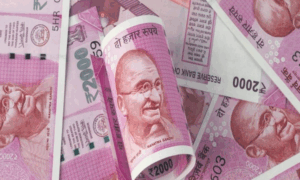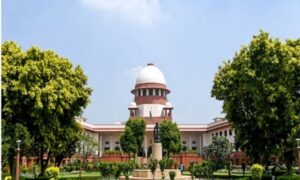
Few weeks into the covid lockdown, a leading daily in Kolkata carried a news which claimed the highly endangered Gangetic dolphin has for the first time seen in 30 years in the Hooghly River in a ghat (Babughat) located in the metropolis. This generated a lot of interest in social media and like many other feel good stories attributed to the decrease in pollution due to restrictions imposed. Well, the fact is that Gangetic dolphin has always been in an ubiquitous part of the river flowing next to the city. Ask any of those who travel by steamers around Babughat and they will share how they see the dolphin so regularly. Though the news of dolphin sighting after decades is not factually true, however, what the story did do was to focus attention on the high pollution in the Hooghly River. It is important to highlight that it is not only Hooghly that is polluted, but a whole lot of other rivers in the state. This is an issue that needs an urgent attention. Unlike, the Yamuna in Delhi and UP which looks polluted because of the lack of flow and stink, the rivers in West Bengal gives an impression of being clean. Public concern as well as media attention has also remained limited and this has also led to lack of action on the part of the enforcement authorities. This article focuses on the state of some rivers in West Bengal.
The West Bengal Pollution Control Board (WBPCB) has been monitoring the water quality of 17 rivers at 44 locations to assess the quality of water. The water quality data is assessed and compared with the desired quality as identified under the designated best use water quality criteria by the Central Pollution Control Board (CPCB).
An analysis of the monthly data for the year 2013 till 2018 and subsequent information received from the relevant authorities under the Right to Information Act, 2005 reveals a sorry state of affairs.
Pollutant Concentration level – No significant improvement since 2013
Biochemical Oxygen Demand (BOD) and Total Coliform (TC) have been considered as part of the analysis. BOD defines the amount of oxygen consumed by bacteria and other microorganisms while they decompose organic matter. The more the amount of BOD, less will be the amount of Dissolved Oxygen (DO) in water, which is critical in maintaining the aquatic life and the aesthetic quality of streams and lakes. The Total Coliform bacteria are on the other hand a primary indicator of potability of drinking water. It itself is not a pathogenic (disease causing) organisms but indicate presence of other pathogenic bacteria or organisms. If large numbers of coliforms are found in water, there is a high probability that other pathogenic bacteria or organisms may also be present. The presence of coliform bacteria, mainly faecal coliform in water indicates presence of sewage waste or faeces from human or other animal excreta. The presence of faecal contamination is an indicator that a potential health risk exists for individuals exposed to this water.
It has observed, though there is a decreasing trend in BOD level from 2013 to 2018 in 7 out of 14 monitoring stations of Ganga, the level has however not touched the quality desirable for ‘Class B’ and ‘Class C’ always. Not only the BOD, but the total coliform level of Ganga has also not shown any significant improvement. Concentration has surely decreased but failed to reach even the ‘Class C’ level, leave aside the superior ‘Class B’ or ‘Class A’. Those who are not familiar with the terms: ‘Class A’ water is fit as drinking water without any conventional treatment but after disinfection. ‘Class B’ is suitable for outdoor bathing whereas the ‘Class C’ is fit for drinking after conventional treatment and disinfection.
Pollution Hotspots
There is no doubt that the Hooghly river adds to the sanctity of the famous Dakshineswar temple; yet few are aware as how polluted the river is at this stretch. In Dakshineswar, the average BOD level has remained high above the standard of <3mg/l (fit for ‘Class B’ and ‘Class C’) all throughout the study period. It means the water is not suitable for even bathing at all and therefore the question of drinking does not arise. It is worth reminding that Dakshineswar is a prominent pilgrim site and is one of the top 10 domestic travellers’ destinations in West Bengal with an annual footfall of 1.4 crore visitors and nearly 50,000 devotees on any given day. And the devotees love to pay homage by taking holy bath in the water.
Biotic waste like flower petals of puja offerings, food waste generated have contributed to such a high level of BOD.The consistency of poor quality of water is also attributed to absence of sewage treatment plant (STP) and its non-functionality. STP of Dakhineshwer is one such, which is non-functional as reported by Kamarhati Municipal Councillor under RTI.
The other pollution hotspot is the historic town of Serampore, originally a Danish trading post but the East India company gave the Danish the control of Sumatra and in return got Serampore as their territory. Serampore has recorded an abrupt increase in the BOD level, from 2.88 mg/l in 2013 to 4.46 mg/l in 2018 during the summer season. This indicates that over the years water quality has deteriorated and became unfit for bathing.
An epidemiological studyis worth quoting here, which was conducted in 2013 for the people during a religious bathing event in Kumbh Mela having polluted water stretch with high level of BOD and Total Coliform. It indicates increased incidence of water borne infections including abdominal pain, severe diarrhoea, vomiting with abdominal pain, high grade fever and skin problems like itching and rashes etc. If an one time bathing leads to such level of infections, it goes without saying that the regular bathing in contaminated water will develop some or other likewise symptoms.
Not only the BOD, but the total coliform level of Ganga has also not shown any significant improvement. Places like Bahrampur and Tribeni showed an increase in concentration over the year, whereas in other places though the concentration has decreased but failed to reach even the ‘Class C’ level, leave aside the superior classes.
Monitoring Station Total Coliform (MPN/100 ml) Standard for ‘Class C’ Use (MPN/100 ml)
Dakshineswar 5,19,167 < 5000
Garden Reach 4,61,833
Howrah Shivpur 2,51,667
The river Mahananda,one of the prime tributaries of the Ganga has also recorded an alarming 2 fold increase in BOD level by reaching up to 9.79 mg/l, which is way higher than the standard for ‘Class B’ and ‘Class C’.In terms of total coliforms also, rivers like Mahananda, Kaljani and Karola though have recorded a decreasing trend; the word ‘decrease’ seems an irony here. The total coliform shall be 5000 MPN/100ml to meet ‘Class C’ water, whereas the actual concentration remained between 10,416 MPN/100ml and 2,80,000 MPN/100ml.The beauty and serenity of North Bengal does not remain true anymore while it comes to river health.
River Damodar once known as the ‘Sorrow of Bengal’ has now acquired a new crown on its head, Polluted river stretch of Bengal, with an average value of total coliform and BOD remained higher than the permissible limit almost through out the study period, in most of the locations. Rivers like Rupnarayan, Barakar, Kansi, Silabati and Dwarka has also recorded near to 50,000 MPN/100 ml of total coliform.
Non-functional STP is a culprit here as well. As reported by Asansol and Durgapur Municipal Corporation respectively under RTI, in Asansol, Burnpur, Jamuria, Kulti and Raniganj, a total of 62 drains are flowing to the river Damodar without any treatment as no STP is operational except in Durgapur. Tarapith Rampurhat Development Authority has also reported non functionality of the STPs in Tarapith area which led to direct discharge of sewer in Dwarka River through 6 sewer lines.
Not a single river in the state has made its mark as a healthy river. Churni, Mathabhanga, Bidyadhari and Jalangi located in the deltaic part of Bengal have also recorded average BOD higher than the permissible limit in all three seasons of summer, monsoon and winter at all locations except one. The level of total coliform is also quite alarming with seasonal average remained as high as 3,99,500 MPN/ 100 ml during monsoon of 2014 and almost touching the level of 5,00,000 MPN/100 ml at certain locations.
Health of generations at stake
Decrease of total coliform at such trivial rate is not going to transform the way it is affecting the public at large; rather it will take a generation to achieve the desired water quality. According to WHOFactsheet of 2017, each year diarrhoea kills around 5, 25, 000 children under the age of five years. It reported, children who are malnourished or have impaired immunity, as well as people living with HIV, are most at risk of life-threatening diarrhoea.
The state of West Bengal has acquired first place in acute diarrhoeal death in the year 2011; the picture remained largely same in 2018. In 2011, the State recorded approximately 23% of total deaths nationwide, whereas in 2018, the rate is 14.33%. In India, already 600 million face “high to extreme water stress” and 200,000 people die each year due to inadequate access to safe water, as stated by NITI Aayog in 2018.
Regulatory Authorities failed to execute Power
It is surprising that, WBPCB and the respective urban local bodies did not issue any advisory warning/signage/or restriction against bathing or any other activities being practiced along these rivers. Instead, the PCB has wrongly classified river stretches. For example,at Serampore, WBPCB in its water quality information system (published on WBPCB website) has reported bathing, washing and navigation as the visible activities, which means the water category shall be ‘Class B’ as per the CPCB, whereas the WBPCB has noted as ‘Class C’. This was found in many other locations.
Designating the right use-based class is a prerequisite for mitigating pollution because the permissible limit of different parameters varies for each use-based class. For example, the permissible limit of total coliform is 500 MPN/100 ml for ‘Class B’ and 5000 MPN/100 ml for ‘Class C’. Therefore, the PCB will be more than relieved even if they brought down the level of total coliform at 5000 MPN/100 ml and that might be the reason behind reporting an inferior class of usage in spite of their own visual observation.
This raises serious doubt on the intention of the WBPCB as a monitoring and enforcement agency because firstly, they did not give any explanation of their classification and secondly they seem to have washed their hand by wrongly reporting inferior usage.
The WBPCB seems reluctant even to meet the National Green Tribunal (NGT) order dated 20th September, 2018 in matter of News item published in the Hindu, Authored by Sri Jacob Koshy titled “More river stretches are now critically polluted: CPCB” (O.A. No. 673/2018). The state though has come up with a River Rejuvenation Committee on 7th January, 2019has however failed to develop targeted and time oriented action plan for each polluted river stretch, as could be seen from a closer look at theindividual action plan .
The Way Forward
West Bengal is geographically unique as the only State in India which stretches from Himalaya in north to Bay of Bengal in extreme south. This vastness adds to the diversity of river characteristics. The day is not so far when all these river courses will turn into a dirty, stinking, polluted passage of water unless rejuvenation of river is given an immediate attention. Financially weaker sections of the society, who have no other option but to take bath in river and are depending on river water for daily chores, fisher folks whose fish yield is largely dependent on the water quality would be the sufferer.
Source mitigation approach is therefore needed to be adopted at the first place so as to avoid treatment cost to the extent possible. Mapping of all the potential sewer drainage is necessary in order to come up with suitable treatment facilities within a fixed time frame Bathing Ghats across all the river stretches are also required to be mapped to adopt preventing measures on an urgent basis. As a first step, notice board should be put up to inform the public of the hazards of bathing in the river. Of course, it will not reduce the pollution load, but it can warn people of the consequences and generate public opinion on the need for cleaning up of the rivers.
[the_ad id=”22718″]


















